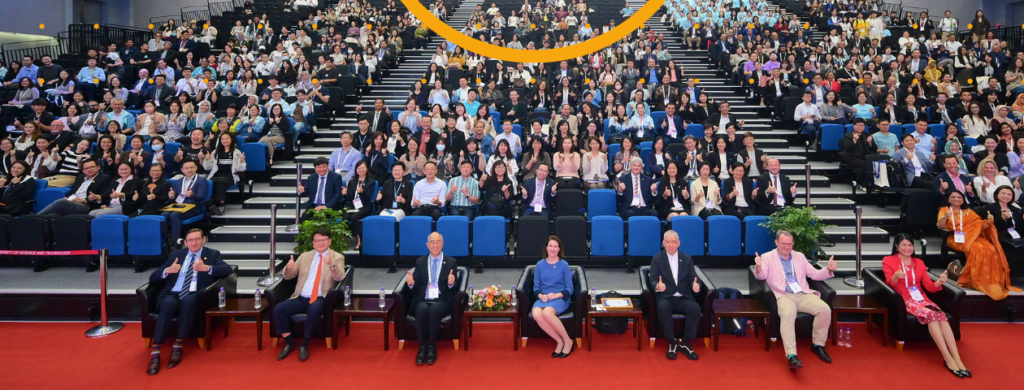
In the heart of the Middle East, a magnetic pull is drawing students from all over the world. From Dubai to Doha to Abu Dhabi, education hubs with international branch campuses have sprouted up, offering students access to world-class education and cutting-edge research.
In 2008, the New York Times published a story, ‘US universities rush to set up outposts abroad’, investigating the trend of American universities establishing tertiary programmes and campuses overseas, particularly in the Middle East. The article sparked a flurry of comments, prompting the news daily to follow up with then-dean of Carnegie Mellon in Qatar, Charles E Thorpe, to field questions asked by their readers.
In the comments, there was an overall sense of pessimism and curiosity towards importing Western universities into the region, especially given the post-9/11 environment.
- “Isn’t this rush to set up universities abroad just a form of academic imperialism?”
- “Are these American universities planning to teach humanities and social sciences? The impact of teaching beyond sciences and economics could be very significant – politically and culturally.”
- “I’d like to know if you or CMU’s main administration are thinking about this question long-term, or… desperate for a quick shot of oil money.”
Despite notable failures such as the closures of George Mason University in Ras Al-Khaimah in 2009 and Michigan State University’s satellite campus a year later, many more overseas universities have embarked on their journey in the region and are slowly establishing their presence.
This article was originally published in QS Insights Magazine’s Middle East Supplement
Read QS Insights Magazine
Global city goals
One such university was Middlesex University (MDX) Dubai, which opened their first campus in Dubai Knowledge Park in 2005. Today, MDX Dubai prides itself for a student community of over 5,000 students from 120 nationalities. The university recently opened another campus at Dubai International Academic City.
In an interview with QS Insights Magazine, MDX Dubai’s Pro Vice-Chancellor and Director Cedwyn Fernandes says that the location of Dubai is a major factor of why it is effective in attracting students. Dubai, which was ranked 54th in the QS Best Student Cities rankings 2024, is very close to big markets like India, Pakistan and Sri Lanka, making it easier and less costly for students to access good quality education without having to travel to the traditional destinations like US, UK or Australia. “There is this catchment area which is really massive,” says Fernandes.
Ghassan Aouad, Chancellor of Abu Dhabi University, agrees that cost as well as safety is a big concern for many parents who are sending their children off to university. But these education hubs in the Middle East, are seen as safe havens for their children. “Students can get [Western education] in the region without travelling [far],” says Aouad, who is also the former president of the University of Wollongong in Dubai. Daniel Adkins, Group CEO at TransNational Academic Group, makes the point that visa applications are also much easier to get approval for in the Middle East compared to places like Australia. “If a university is looking to make their education available as widely as possible to benefit society at large, it makes sense to make it available in places where people can go and where they feel safe going,” says Adkins.
From the position of many other governments in the region, to be seen as a global city, they must be host to top-class universities. Kyle Farley, former Associate Vice Chancellor of Student Affairs at New York University (NYU) Abu Dhabi, says: “If you try to think what’s a world class city without great higher education [institutions], I can’t think of any.”
While critics might label the establishment of international campuses as some sort of academic imperialism, Sara Pervaiz Amjad, Assistant Dean of Administration for Student Affairs at NYU Abu Dhabi, thinks otherwise. Amjad contends that many of these projects are joint decisions between both countries and the result of invitations from the Middle East. “There’s value in recognising that it’s something that the country wants, especially in terms of becoming a global hub and in establishing itself… not just for knowledge consumption but also for knowledge production,” she says.
Unparalleled experiences
With its location and rich culture, international branch campuses offer students a wealth of opportunities. For Farley, he believes that there are pockets of potential found in these campuses that are not available at the universities “back at home”. For instance, the NYU Abu Dhabi campus is a space where students “are required to engage with people of different faiths, of different regions, different ethnicities in a way that would just not happen [in the US]”, says Farley. Students in NYU Abu Dhabi “think of the world in a global perspective”, he adds. “If you think about what’s happening in Libya or think about what’s happening in Morocco, if you’re at NYU Abu Dhabi, it’s not theoretical, it’s personal. Your roommate is from that country. So, the way that you start to think about global politics, the way you think about environment forest fires here or rising sea levels there, the way you engage with global events and global politics is a way that would never happen if you were staying at home.”
Amjad echoes Farley, as she draws attention to the issue that much of knowledge has always traditionally been centred on the US and Western Europe, with a lack of diverse perspectives in the classroom. However, in campuses like NYU Abu Dhabi, there are many different cultures being represented, she says. Education goes beyond the surface of just the academics and delves into developing intercultural understanding which comes from being in community with people who come from very different lived experiences around the world.
With age comes wisdom
Despite the nascent stage of these branch campuses, a common theme with the more popular branch campuses in the Middle East is that their home institutions have had years of experience in running a university. “Look at the age of the universities,” says Farley. NYU for instance is 192 years old and is among the top 40 universities in the QS World University Rankings 2024.
“There’s a reason to bring in these global, international universities because they are so experienced teaching at research in running a flagship university. The goal of those institutions is to partner with domestic institutions and to catalyse the growth of those domestic institutions,” he says.
At the same time, Farley says the ability of these universities to innovate is “remarkable” and they are “generators of culture”. “When you think of the student experience, it’s not [about] playing catch up. It’s not trying to copy or replicate what an orientation or student experience would look like in the West. It’s to create new opportunities.”
Think global, live local
It isn’t easy to isolate the root reasons for why some universities have not been successful in the region, but Aouad says that universities should have a good understanding of the culture of the region, as well as consider the values of the new country they are trying to establish themselves in. “It could be a combination of factors,” he says. “There’s always risk associated with these activities, and you have to work on risk minimisation and… understand the market.”
The growth of international branch campuses in the Middle East is not, and cannot be, based on simply replicating and transplanting their Western counterparts to a new region. “That concept would be too limiting,” says Farley. “I think if universities set up international campuses thinking that they’re there to replicate, I think they’ve already lost part of the dynamism of creating these new campuses.”
This sentiment is echoed by Paula Sanderson, Chief Operating Officer at MDX Dubai, who puts it simply: “Replacing a supermarket name with another supermarket name and thinking that that’s going to make a business element appropriate – it’s not.”
Sanderson, who does research focussed on the governance and ethics of overseas partnerships and operations, emphasises that universities need to “do really deep work and really understand the environment”. Hiring local talent is one vital way for universities to understand their new environment and cultural context, she says. She adds that universities should take a highly localised approach when setting up in a new region, tailoring their approach to the specific environment in which they are operating.
Faculty also play a valuable factor in ensuring the branch campuses are thriving. Fernandes emphasises that the staff of an international branch campus need to “have boots on the ground” and not rely on the fly-in-fly-out model, where employees are temporarily in the region and are not adequately equipped with the cultural know-hows of the new country.
Campuses overload?
As we look to the future, the region may soon be, if not already, overwhelmed and saturated with the presence of international institutions. Adkins says that a new university to the region would have to come up with some way to differentiate itself, if not, it would be difficult to build up enough of a student body to be financially viable. The two-year pandemic also caused a dent to the potential of new branch campuses. “A lot of universities suddenly realised that they could just as effectively offer their classes in an online or distance format as directly and worldwide,” he says. Therefore, universities which were thinking of setting up internationally have decided to skip the bricks and mortar and instead make their programme available online for distance learning.
Aouad adds that with the maturity of local universities, which are improving in quality, there might be more joint programmes between local and international universities, instead of establishing a brand-new campus from scratch. “The new business model could be different,” he says. Such partnerships could involve sharing resources and providing opportunities for student and faculty exchanges.
As the branch campuses develop and thrive within the education hubs of specific cities in the region, it is also worthwhile to remember that the Middle East includes many countries which are progressing at different paces. While some countries, such as Saudi Arabia and the United Arab Emirates are investing heavily in education and attracting world-renowned universities to open branches, others like Palestine, Yemen and Syria are experiencing lingering conflicts that have had a devastating impact on their livelihoods and education systems.
As the region, with its growing youth population, continues to develop and diversify its economies, there will be a growing demand for tertiary education, which will heavily rely on international campuses to satisfy that demand. The future of these branch campuses in the Middle East appears promising with its potential to play a major role in transforming the region into a global hub for education and innovation.



